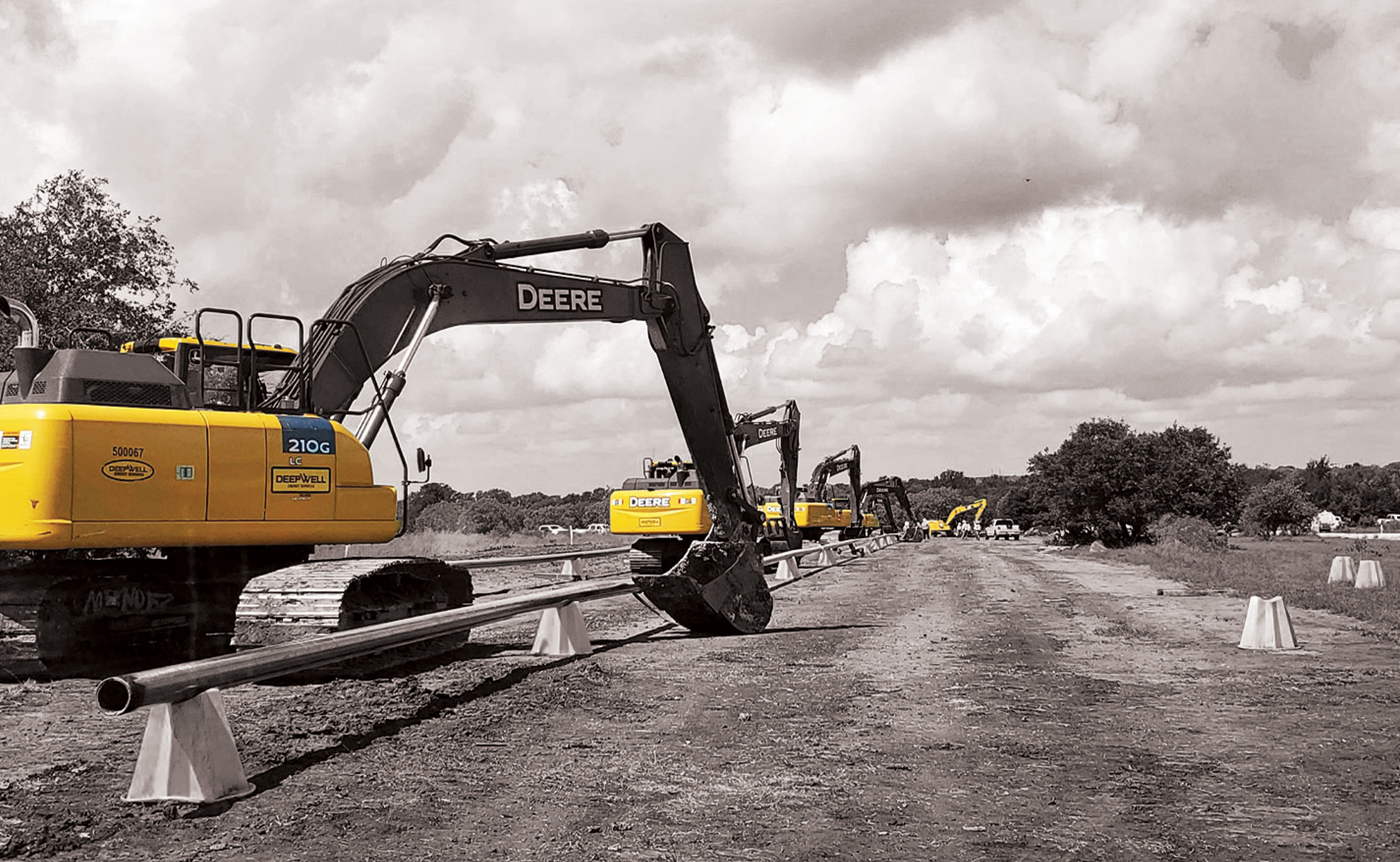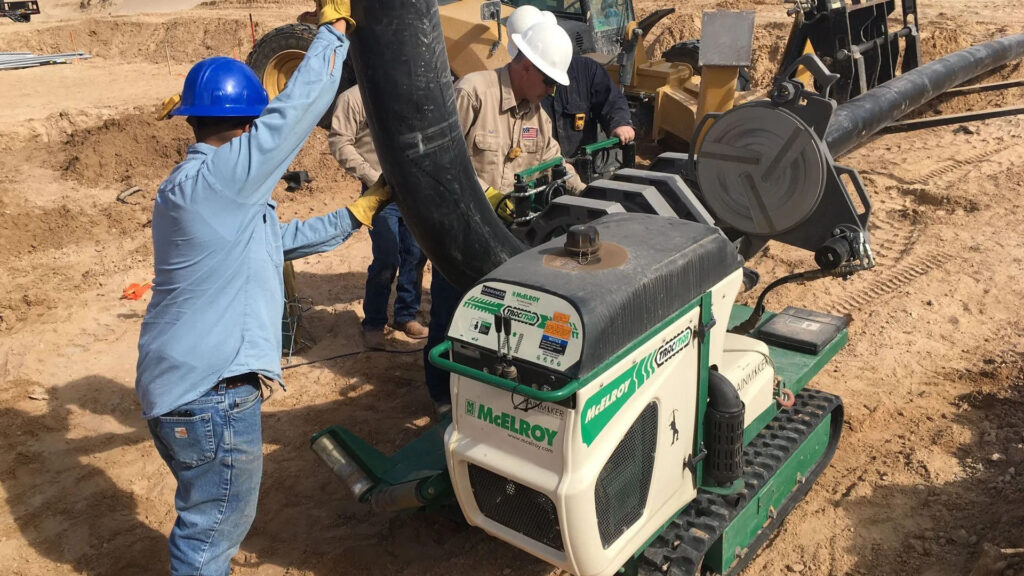A Comprehensive Overview to the Numerous Types of Oil Field Equipment and Pipeline Equipment Available
The oil and gas market relies heavily on specialized equipment for effective extraction and transportation. Different sorts of equipment, from drilling rigs to tank, play vital roles in this complex process. Each item of tools serves distinct functions that add to overall functional success. Understanding these parts is essential for anyone involved in the sector. As the market advances, so also do the modern technologies that sustain it. What improvements are on the perspective?

Drilling Rigs: The Foundation of Oil Exploration
Drilling rigs offer as the vital machinery in the domain of oil expedition, making it possible for business to accessibility hydrocarbon gets buried deep beneath the Planet's surface. These rigs can be found in numerous types, including land rigs, offshore rigs, and mobile units, each designed to run in particular atmospheres. Geared up with advanced modern technology, piercing rigs can pass through geological formations with accuracy, ensuring efficient resource removal. The architectural honesty and operational capabilities of these rigs are important, as they need to withstand extreme conditions and significant pressures. The selection of an exploration rig affects the total project price and timeline, making it an important factor to consider for oil business looking for to optimize their expedition initiatives and maximize productivity in their operations.
Pumps: Vital for Fluid Movement
In the oil extraction procedure, the function of pumps is considerable, assisting in the motion of fluids throughout various phases of production. Pumps are important for carrying crude oil, water, and other fluids from underground reservoirs to the surface area and afterwards with pipelines to refineries. They are available in numerous kinds, including centrifugal, favorable variation, and submersible pumps, each offering certain functions based on the liquid attributes and operational demands. Centrifugal pumps are typically made use of for their effectiveness in high-flow applications, while positive variation pumps master dealing with thick fluids. The selection of pump effects overall performance, operational safety, and upkeep costs. Appropriate selection and upkeep of pumps are essential for optimizing manufacturing and minimizing downtime in oil area operations.
Valves: Managing Flow and Pressure

Valves play a vital role in handling the circulation and pressure of liquids within oil fields and pipelines. Different sorts of shutoffs offer distinctive applications, each designed to satisfy certain features basic for reliable operation - Superior rentals squeeze tools. Understanding the features and uses these valves is vital for enhancing system performance and safety and security
Sorts of Valves
Essential components in oil field procedures, valves play an essential role in regulating the circulation and pressure of liquids within pipelines and equipment. Various sorts of shutoffs are made use of to meet the diverse needs of oil and gas manufacturing. Usual types include gateway shutoffs, which offer a straight-line flow and minimal stress drop; globe valves, understood for their throttling abilities; and ball shutoffs, acknowledged for their fast on/off control. Additionally, check shutoffs avoid heartburn, while butterfly shutoffs supply a light-weight service for regulating circulation. Each valve kind is made with particular materials and configurations to withstand the severe conditions commonly discovered in oil fields, guaranteeing reliability and efficiency in procedures. Recognizing these kinds is vital for efficient system management.
Valve Applications and Features
While different kinds of valves serve distinctive functions, their key applications rotate around controlling circulation and pressure within oil and gas systems. Shutoffs such as gate, globe, and ball shutoffs regulate fluid activity, guaranteeing peak efficiency and safety. Gateway valves are generally used for on/off control, giving minimal circulation resistance. World valves, on the various other hand, deal accurate circulation regulation, making them appropriate for strangling applications. Round valves are preferred for their fast operation and tight securing capacities. Furthermore, pressure alleviation valves are crucial for preventing system overpressure, securing tools integrity. In general, the ideal selection and application of valves improve functional efficiency, guaranteeing the reliable transport of oil and gas via pipes and processing facilities.
Compressors: Enhancing Gas Transportation
Compressors play an essential duty in the efficient transport of natural gas, ensuring that it relocates efficiently through pipes over fars away. These gadgets raise the pressure of gas, permitting it to overcome friction and altitude changes within the pipeline system. Furthermore, compressors assist in the harmonizing of supply and demand, fitting variations in intake and production rates. Numerous sorts of compressors are used in the sector, consisting of centrifugal, reciprocating, and rotating screw compressors, each offering distinctive benefits based upon the functional needs. Normal upkeep of these compressors is important to make best use of performance and lessen downtime, eventually adding to a trusted gas transport network. Their vital function emphasizes the relevance of compressors in the total oil and gas infrastructure.
Storage Tanks: Safe and Efficient Liquid Management
Effective transportation of gas depends on various support group, one of which is the correct monitoring of storage containers. These containers play a crucial function in safely having fluids, ensuring that functional efficiency is kept while lessening ecological risks. Created from resilient products, they are created to withstand high stress and corrosive aspects. Properly sized and tactically located, tank help with the smooth flow of gas and other liquids, stopping bottlenecks in supply chains. Regular upkeep and surveillance are necessary to spot leakages or architectural issues, promoting safety and security and compliance with regulative criteria. Inevitably, the reliable monitoring of tank is critical for the total stability and dependability of the oil and gas industry's fluid handling systems.
Pipeline Solutions: Framework for Transport
Pipeline systems serve as the backbone of the oil and gas market, facilitating the effective transport of hydrocarbons over substantial ranges. These systems contain different elements, consisting of pipelines, shutoffs, pumps, and compressors, all meticulously developed to ensure smooth circulation. The products made use of in pipeline construction, commonly steel or high-density polyethylene, are chosen for sturdiness and resistance to rust. Pipeline networks can cover throughout land and water, attaching production sites to refineries and distribution. Furthermore, progressed innovation allows real-time tracking of circulation rates and stress levels, boosting operational efficiency. The strategic positioning of these pipes decreases ecological influence while optimizing resource availability, thus playing a vital function in meeting energy demands worldwide.
Safety Equipment: Ensuring Employee and Environmental Management
The procedure of pipeline systems, while vital for energy transport, additionally provides significant safety and security difficulties for employees and the environment. Safety equipment plays a significant role in mitigating these threats. Personal safety equipment (PPE) such as headgears, gloves, and non-slip footwear safeguards employees from physical dangers. In addition, gas discovery systems keep an eye on for leakages, making sure that harmful materials do not pose a danger to workers or the surrounding ecosystem. Emergency shutdown systems are critical for promptly halting procedures throughout a situation, preventing potential calamities. Spill containment products, including absorbents and obstacles, are fundamental for minimizing ecological influence. Overall, buying all-encompassing safety and security devices is crucial for preserving functional integrity and securing both employees and the environment in the oil and gas market.

Frequently Asked Inquiries
Exactly how Do I Pick the Right Oil Field Equipment for My Project?
Selecting the ideal oil field equipment includes examining job specs, budget plan restrictions, and functional needs. Consider elements such as equipment dependability, compatibility with existing systems, and the vendor's track record to assure peak efficiency and security.
What Are the Upkeep Demands for Oil Field Equipment?
Maintenance demands for oil field equipment include regular evaluations, lubrication, and timely repair work. Operators should also stick to producer standards, display performance metrics, and assurance conformity with security laws to enhance long life and effectiveness.

How Can I Guarantee Compliance With Environmental Laws?
To ensure compliance with environmental policies, companies should carry out regular audits, execute best methods, invest in training, preserve proper documentation, and stay upgraded on regulation (Superior Rentals fusion machines). Cooperation with environmental agencies can also boost adherence to guidelines
What Is the Typical Lifespan of Pipeline Equipment?
The average life-span of pipeline tools typically varies from 20 to half a century, depending upon elements such as worldly high quality, environmental conditions, and upkeep methods. Regular examinations can substantially affect durability and operational effectiveness.
Exactly how Do I Safely Transport Oil Field Equipment to Remote Locations?
Transporting oil field tools to remote areas needs mindful planning, including path assessment, protecting permits, making use of proper vehicles, and guaranteeing safety procedures are followed. Appropriate training and interaction among staffs are important for click here effective transport.